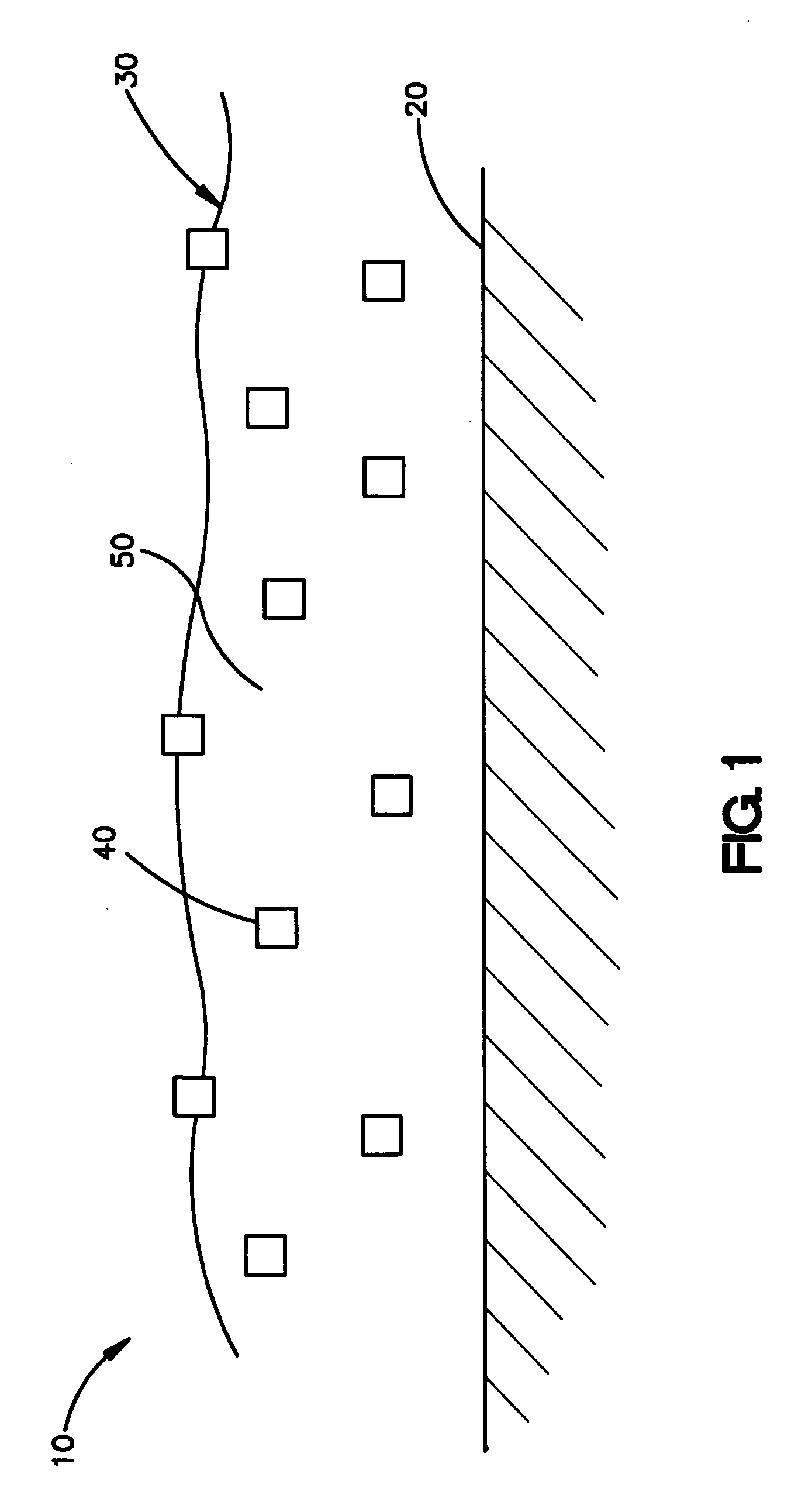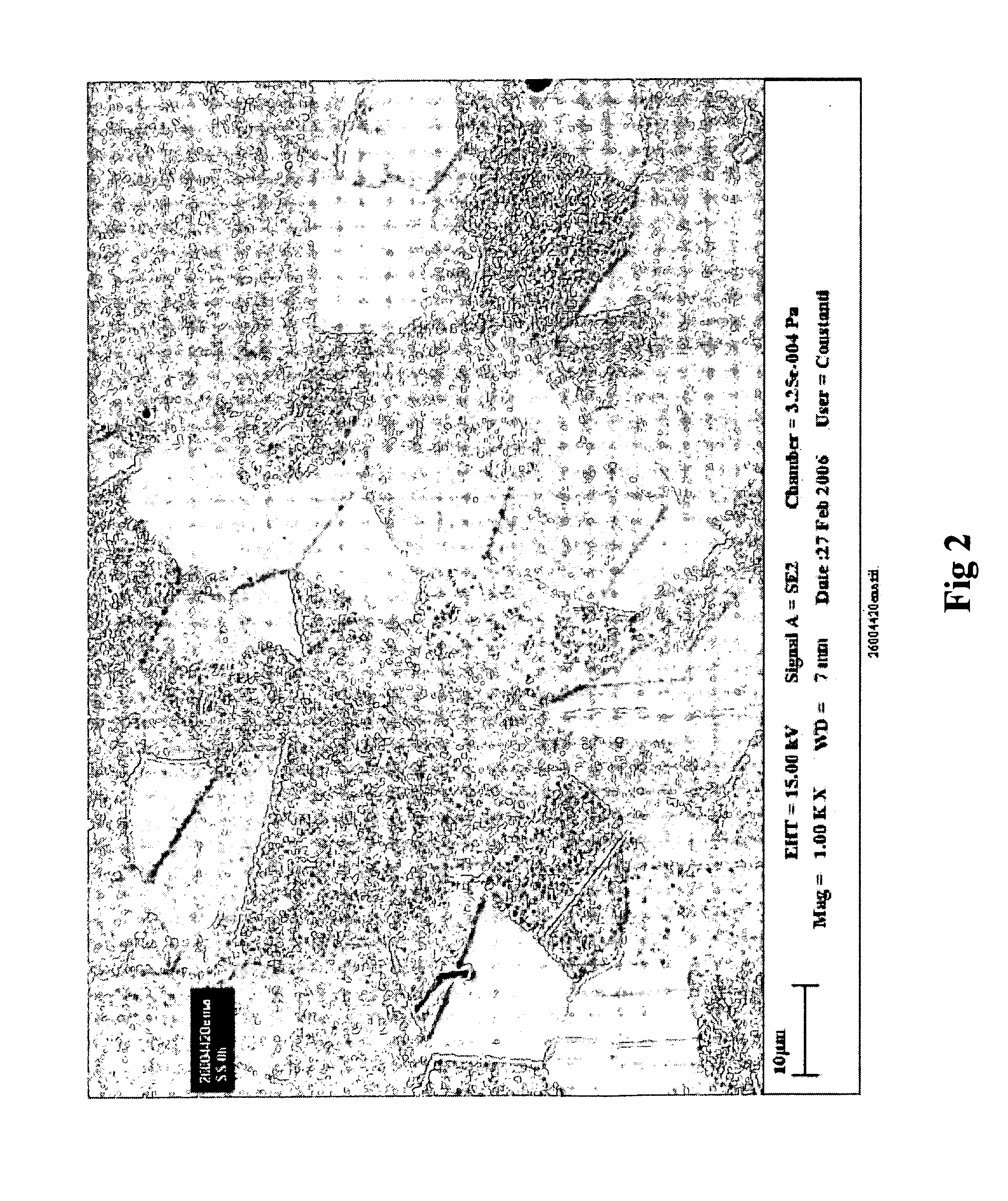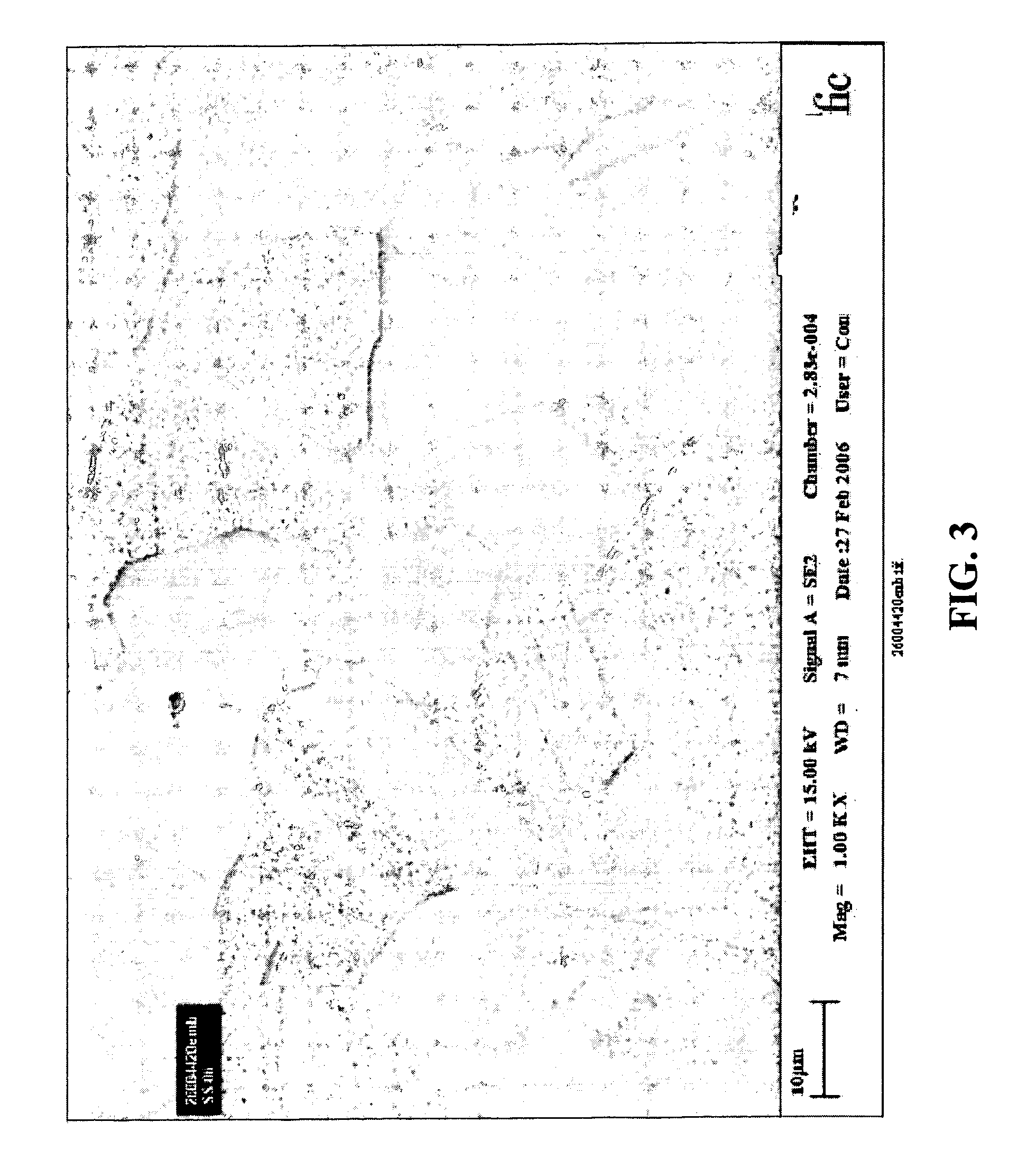Coating for medical devices comprising an inorganic or ceramic oxide and a therapeutic agent
a technology of inorganic ceramic oxide and medical devices, which is applied in the direction of prosthesis, biocide, heterocyclic compound active ingredients, etc., can solve the problems of coating being completely ripped off of the stent, polymer coating susceptible to deformation and damage, and inflammation of the body lumen, so as to increase the biocompatibility prevent corrosion of the medical device, and enhance the adhesion of the coating
- Summary
- Abstract
- Description
- Claims
- Application Information
AI Technical Summary
Benefits of technology
Problems solved by technology
Method used
Image
Examples
example 1
[0142] Sample coatings A through E comprising PEBAX (a copolymer of Nylon 12 or Nylon 6 and polyethers) and titanium were formed on stainless steel coupons. In sample coatings A through E titanium tetraisopropoxide, triethoxysilylpropylisocyanate and combinations thereof where used as precursors. PEBAX was the polymer used. The weight percentages of the precursors PEBAX used in coatings A through E are shown in Table 1.
TABLE 1TitaniumSampleTetraisopropoxide3-triethoxysilylpropylisocyanatePEBAXA1% 1% 1%B1%0.5%0.5%C0.5% 0.5%0.5%D1%00.5%E0.5% 00.5%
[0143] Titanium tetraisopropoxide, triethoxysilylpropylisocyanate or a combination is dissolved in a suitable organic solvent system and is added to a solution of butanol and PEBAX under stirring conditions at 60° C. An HCl aqueous solution is added in order to keep the water to titanium tetraisopropoxide molar ratio to 2:1. Once the hydrolysis is complete, the coating composition is continuously stirred for about 6.5 hours at 60° C. or for...
example 2
[0145] Titanium tetraisopropoxide is dissolved in a suitable organic solvent system and is added to a solution of butanol and PEBAX (a copolymer of Nylon 12 or Nylon 6 and polyethers) under stirring conditions at 60° C. An HCl aqueous solution is added in order to keep the water to titanium tetraisopropoxide molar ratio to 2:1. Once the hydrolysis is complete, a solution of paclitaxel in an organic solvent is then added and the coating composition is continuously stirred for about 6.5 hours at 60° C. or for as long as necessary for aging.
[0146] The coating composition is then sprayed onto the surface of a medical device and a heat treatment that heats the coating composition to 150° C. is applied for 16 hours or as required for densification, removal of organic residues and / or desired drug release properties.
example 3
[0147] Titanium tetraisopropoxide is added drop-wise to a solution of absolute ethanol, surfactant of triblock copolymer (HO(CH2CH2O)20(CH2CH—(CH3)O)70(CH2CH2O)20H) and a complexing agent acetylacetone under stirring conditions. Nitric acid was then added to the mixture. The molar ratios of the ingredients are: titanium precursor / surfactant / complexing agent / nitric acid / ethanol ¼:1:0.05:0.5:1.5:43. The final solution (pH is about 3) is stirred for 24 hours at room temperature.
[0148] The resulting coating composition is applied to the surface of a medical device and is placed an oven for solvothermal treatment at 80° C. for 18 hours and then 150° C. for 20 hours or for as long as required for densification, removal of organic residues and / or desired drug release properties.
PUM
| Property | Measurement | Unit |
|---|---|---|
| weight percent | aaaaa | aaaaa |
| weight percent | aaaaa | aaaaa |
| temperature | aaaaa | aaaaa |
Abstract
Description
Claims
Application Information
 Login to View More
Login to View More - R&D
- Intellectual Property
- Life Sciences
- Materials
- Tech Scout
- Unparalleled Data Quality
- Higher Quality Content
- 60% Fewer Hallucinations
Browse by: Latest US Patents, China's latest patents, Technical Efficacy Thesaurus, Application Domain, Technology Topic, Popular Technical Reports.
© 2025 PatSnap. All rights reserved.Legal|Privacy policy|Modern Slavery Act Transparency Statement|Sitemap|About US| Contact US: help@patsnap.com



